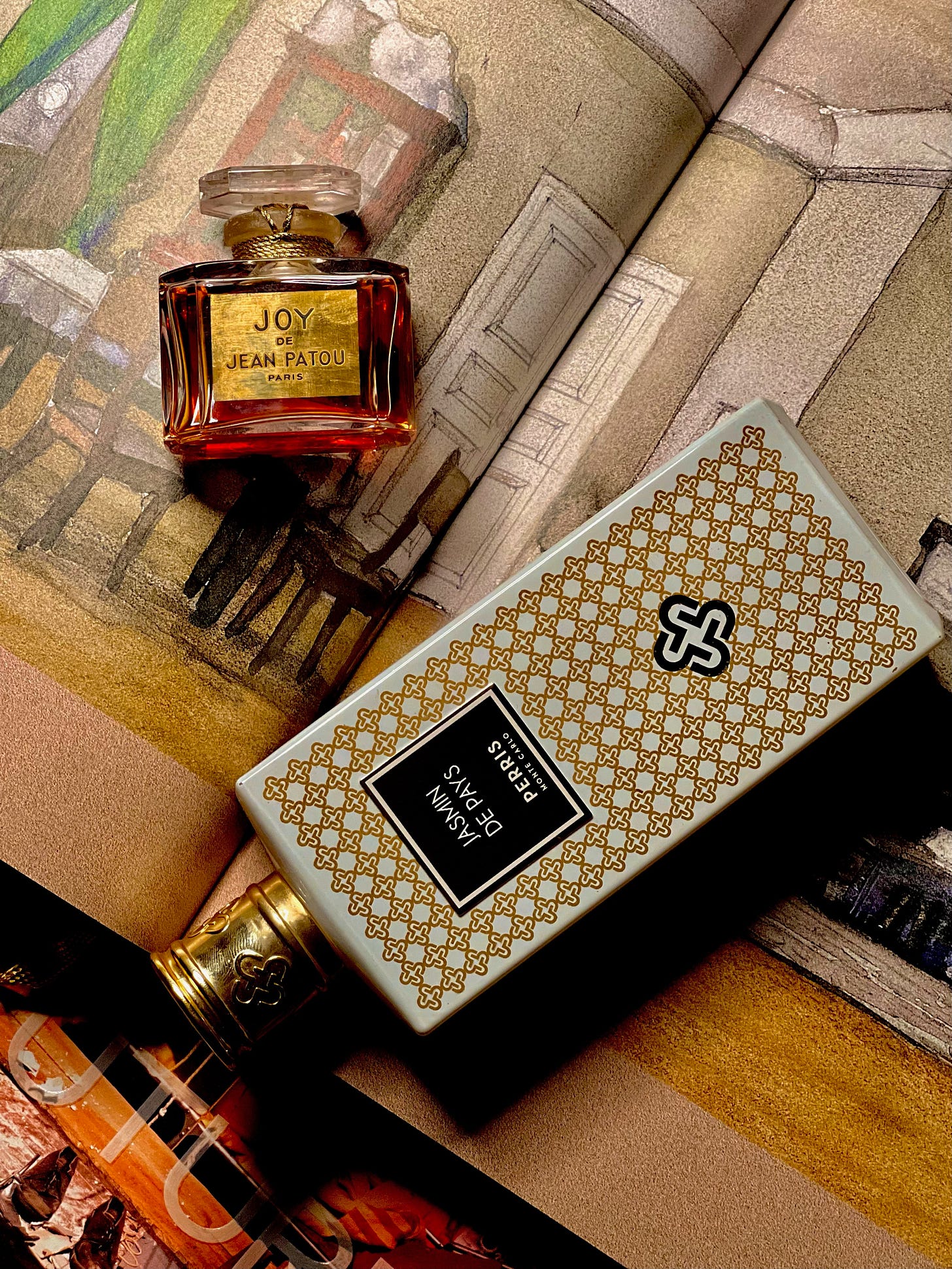Recently on Instagram, Bruno Fazzolari of Fzotic described a typical lilac accord as a blend of rose, lily of the valley, almonds, and a piny note. He also explained how he intends to depart from this by adding mimosa, vanilla, and intensifying the almonds into a marzipan-like richness. His approach to explaining a fragrance—essentially a press release—is a deliberate departure from the traditional, often romanticised language used in perfume descriptions. Instead of saying, ‘You'll smell lilacs sweetened by vanilla amid a swirl of purple petals and marzipan crumbs,’ he offers something more exacting, aimed at describing how the fragrance actually smells rather than what it evokes.
His choice of language reflects a shift in how we describe perfumes, one that focuses less on emotional metaphors and more on precise, concrete language of desctription. This shift is especially noticeable in contrast with early perfume blogging and the press releases from major brands, which continue to favor ‘poetic’ yet vague attempts to identify how a fragrance might make one feel. Persolaise has brilliantly documented these ‘naïve’ pieces of writing on his YouTube channel, where he often mocks overused metaphors and clichés, and though amusing, they underscore the limitations of such language.
Fazzolari’s approach resonates with the evolving expectations of fragrance enthusiasts, who increasingly demand an answer to ‘how does it smell?’ rather than ‘what does it make you feel?’ The question has shifted from the abstract—pondering one’s emotional response to a painting—to the concrete: what do you see (or in the case of a fragrance, what do you smell) exactly? This is in fact a challenging task, as precise descriptions in perfumery can exhaust our linguistic resources quickly, especially when we try to convey olfactory nuances without relying on romanticised language.
This push for specificity in scent descriptions isn’t happening in a vacuum. In modern perfumery, mass production has led to a common formulation methodology in which a substantial portion of formula — possibly upto 80% , though it can vary — of contemporary fragrances is built on a few staple materials like hedione, musks, or other diluting agents. The aesthetic choices made for the remaining 15-20% of the formula tend toward a simplified structure, often resulting in a linear scent profile. This structural simplicity allows for easier description and dissection, offering clear, straightforward notes without extensive layers.
Vintage perfumes, on the other hand, were crafted with a far more intricate architecture, woven from ingredients that evolved over time and interacted subtly. These compositions relied heavily on complex fragrance bases, which allowed for the traces of many natural materials to be introduced to the formula, enhancing richness and depth in ways that today’s formulas rarely achieve. The temporal complexity of vintage perfumes makes them both difficult to interpret and challenging to produce. This intricacy requires a level of skill and time that the industry often lacks the willingness to invest, and which many indie perfumers (some exceptions aside) are not equipped to provide.
Furthermore, today’s market seems largely untrained in these complexities. Consumers, accustomed to the streamlined nature of modern formulations, are rarely encouraged to develop the ability to isolate complex notes or perceive multiple nuances, often lacking the patience for more intricate compositions. Consequently, we increasingly favor straightforward formulas, perpetuating a cycle where both producers and consumers remain satisfied with simplified, predictable scents. They are both easier to produce at the current speed normalized by the industry and easier to understand, highlighting the limited time we dedicate to ‘understanding’ perfumes today. Such simplification, a byproduct of mass production, encourages more straightforward descriptions.
I’ve observed popular Russian YouTubers who excel in blind-testing modern compositions struggle when identifying notes in vintage scents; despite their skill, they often find the temporal interplay and layered nuances of vintage fragrances elusive, to the point where even the overall direction and genre of the composition were difficult to discern. This illustrates well how the intricate layering in vintage perfumes resists precise analysis. I would argue, however, that with more exposure, we could improve our palate. But vintage scents are rare, costly, and, for many, an inaccessible indulgence.
As perfume prices skyrocket, the question of what or who will endure in this world of copy-paste formulations remains open. However, the shift in linguistic descriptors, as seen with Fazzolari’s approach, suggests that consumers are becoming more educated—and, as a result, more discerning. In other words, the fragrance community is undeniably moving toward a more grounded, precise vocabulary for discussing scents. We’re collectively better equipped to answer, ‘What does it smell like?’ and, as a result, ‘Does it smell better than…?’ will be asked more often.
Still, old habits die hard. Today, I unfollowed two reviewers who used “sexy” over five times in their reviews—a reminder that, while we’re making progress, there’s still a fair amount of noise in fragrance discourse.




I find when writing about fragrance so many are easy to describe as I smell x, y & z. These tend not to be to my taste.
My perfume journey started in the 70s & my preference is largely for more dense & complex perfumes. These engage my imagination as well as my olfactory brain. Meaning I do sometimes use fanciful language. I have been known to describe a particularly beautiful musk as smelling of quivering, pink inner thigh!
To me the world of fragrance writing will be a sadder & vastly poorer place if every piece simply becomes a list of notes.
Great thoughts as usual. I wonder who is prompting this simplicity (customers or creators). Stripped down notes lists make it more insta / YouTube review ready. Here’s x, here’s y, z, etc.
I wonder if realism is at play as well. It seems there is more of a push for a ‘realistic rose” or “realistic woods” or whatever. This seems like it would be anathema to some old perfumers, who composed mainly in the abstract and favored like your suggestion more complex and layered creations.